Capitalist chaos: a major survey of Jason Rhoades takes Los Angeles by storm
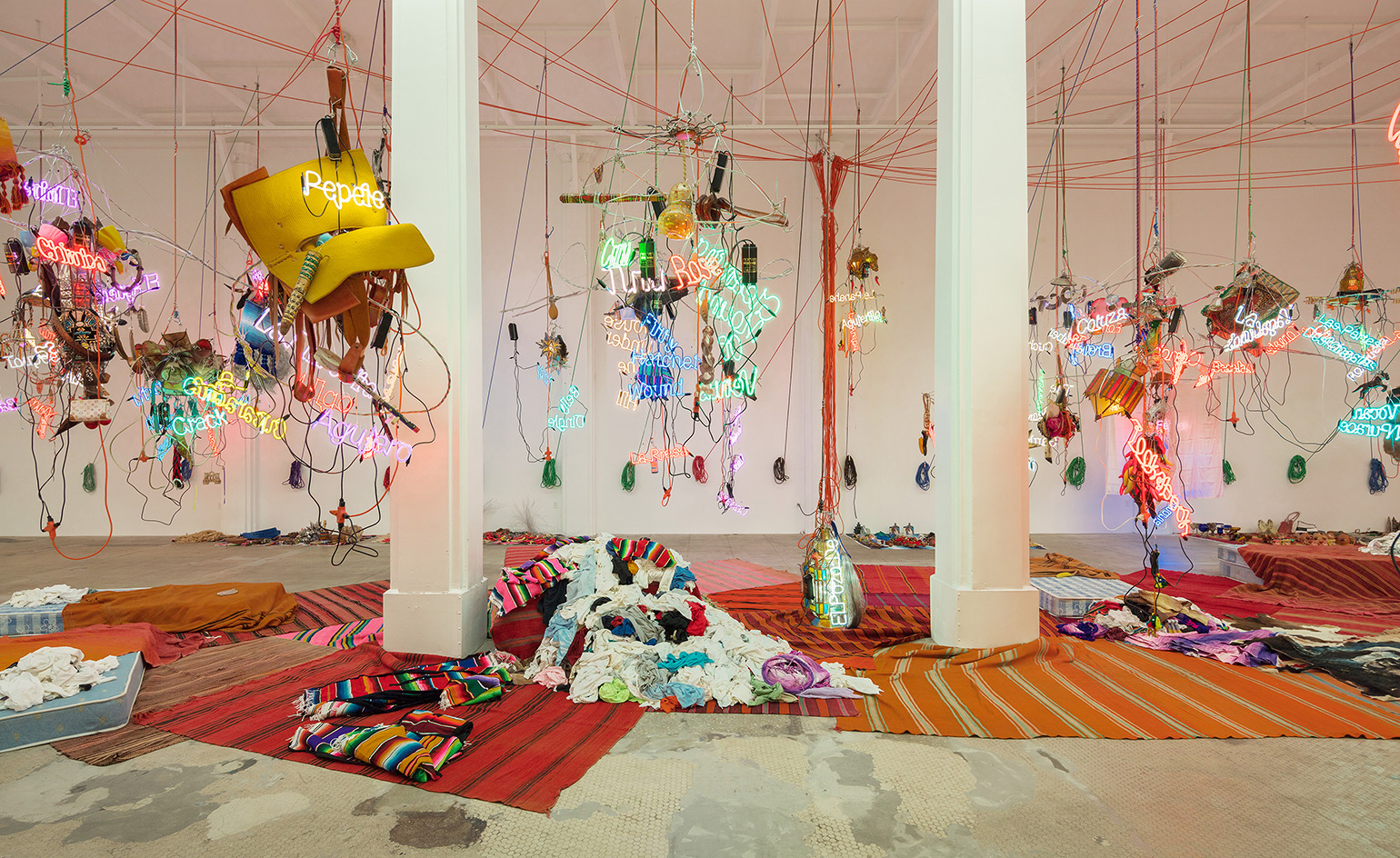
Not many artists can fill 28,000 square feet of gallery space with just six works.
This week the late great Jason Rhoades has done that, with his largest ever exhibition in his hometown of Los Angeles, recently opened at Hauser Wirth & Schimmel. A survey of this kind on Rhoades – who died in 2006, aged 41 – has been in order in LA for some time.
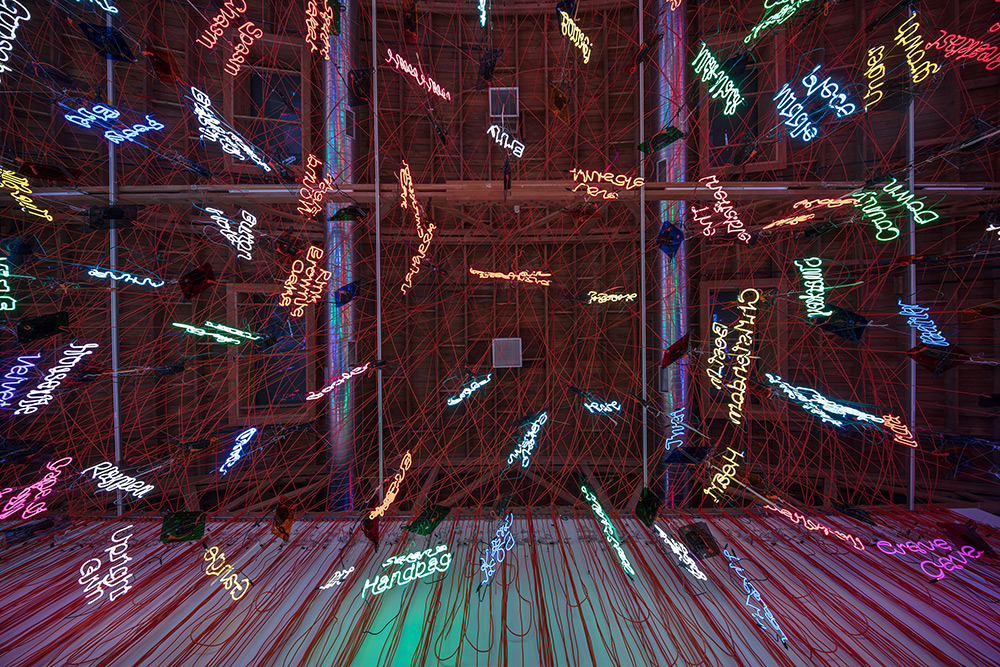
Detail of ’My Madinah. In pursuit of my ermitage...’, 2004
Rhoades was a graduate of UCLA, where his professors included Paul McCarthy and Chris Burden, and he continued to live and work in the city his whole life; but it’s only now that curator Paul Schimmel has traced the trajectory of Rhoades’ career in its Californian context. The six installations span two decades, and have been carefully selected to summarise the artist’s interests and the subjects that preoccupied his practice: sex, politics, religion, art, race and gender.
The nineties works – Swedish Erotic and Fiero Parts, (1994), My Brother/Brancuzi, (1995), The Creation Myth (1998) – give a strong overview of Rhoades experimentation from early on, and his innovative way of visualising the new, technology and consumer driven, networked way of thinking. His mass assemblages of this era are materially synaptic, perhaps most in My Brother/Brancuzi, a work created for the Whitney Biennial in 2005, that leaps from his brother’s suburban bedroom to modernism through piles and piles of stuff.
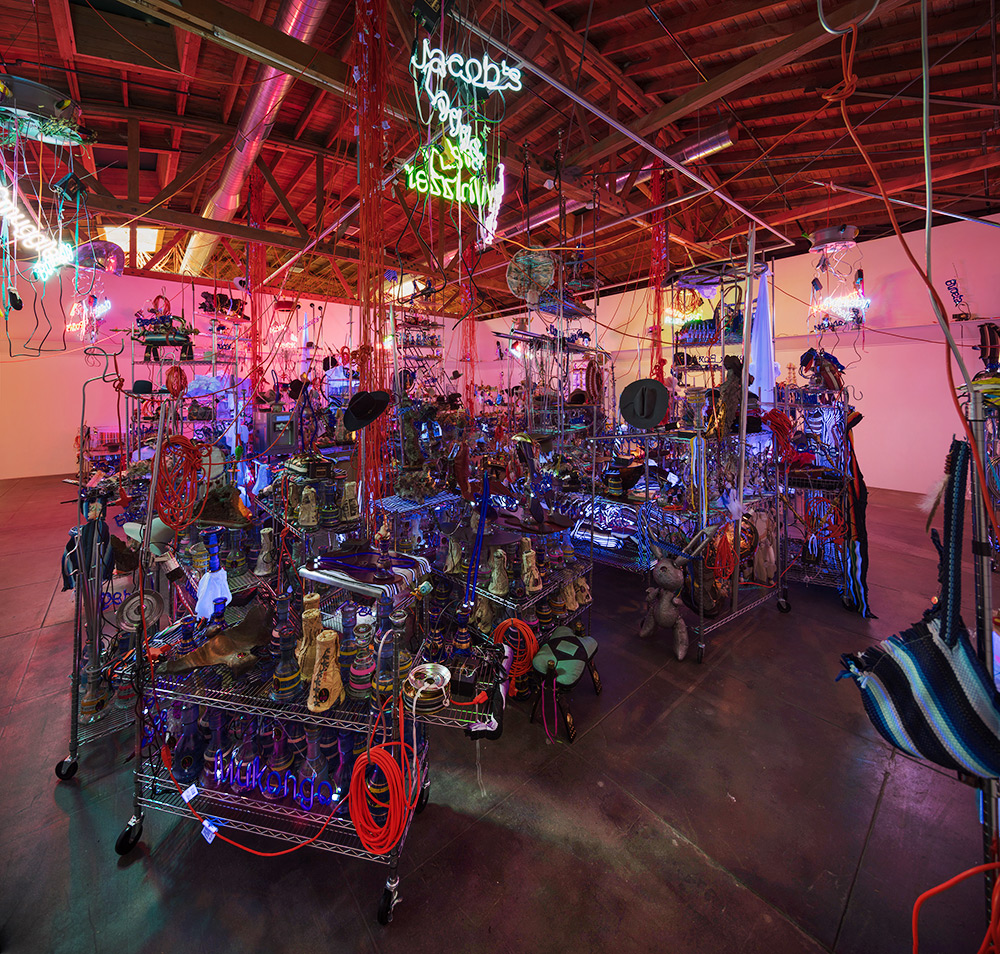
The Black Pussy... and the Pagan Idol Workshop’, 2005
The later works, right up to his last – Tijuananatanjierchandelier (2006) – tug you towards another issue: the search for the ‘ultimate pussy word’. Of course, behind the puerile pursuit in neon lights, Rhoades points to the way language and culture, in a transnational era, condition our thoughts about gender and sexuality.
There is also comfort in Rhoades’ capitalist chaos: the irresistible warmth and light that emanates from his materials and embraces you. In their unabashed, at times brash, maximalism, unapologetic in their physical scale, Rhoades didn’t see any of his works as complete — but in this exhibition, they take you on a journey.
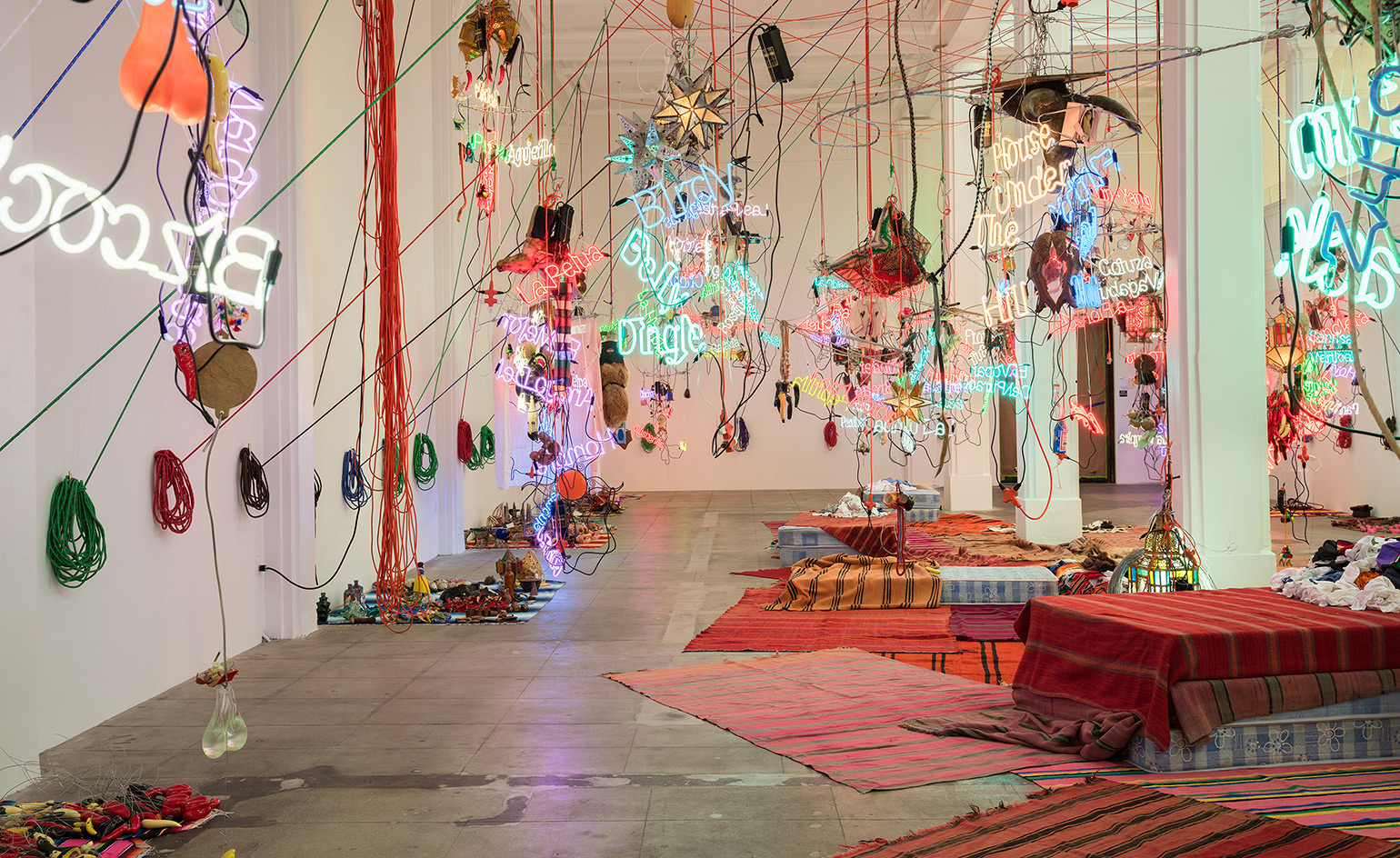
Tijuanatanjierchandelier, 2006, is the most recent work on show, and raises questions about consumerism in relation to disparate cultures and classes by exploring tourism in analogous third world border towns: Tijuana, Mexico and Tangier, Morocco
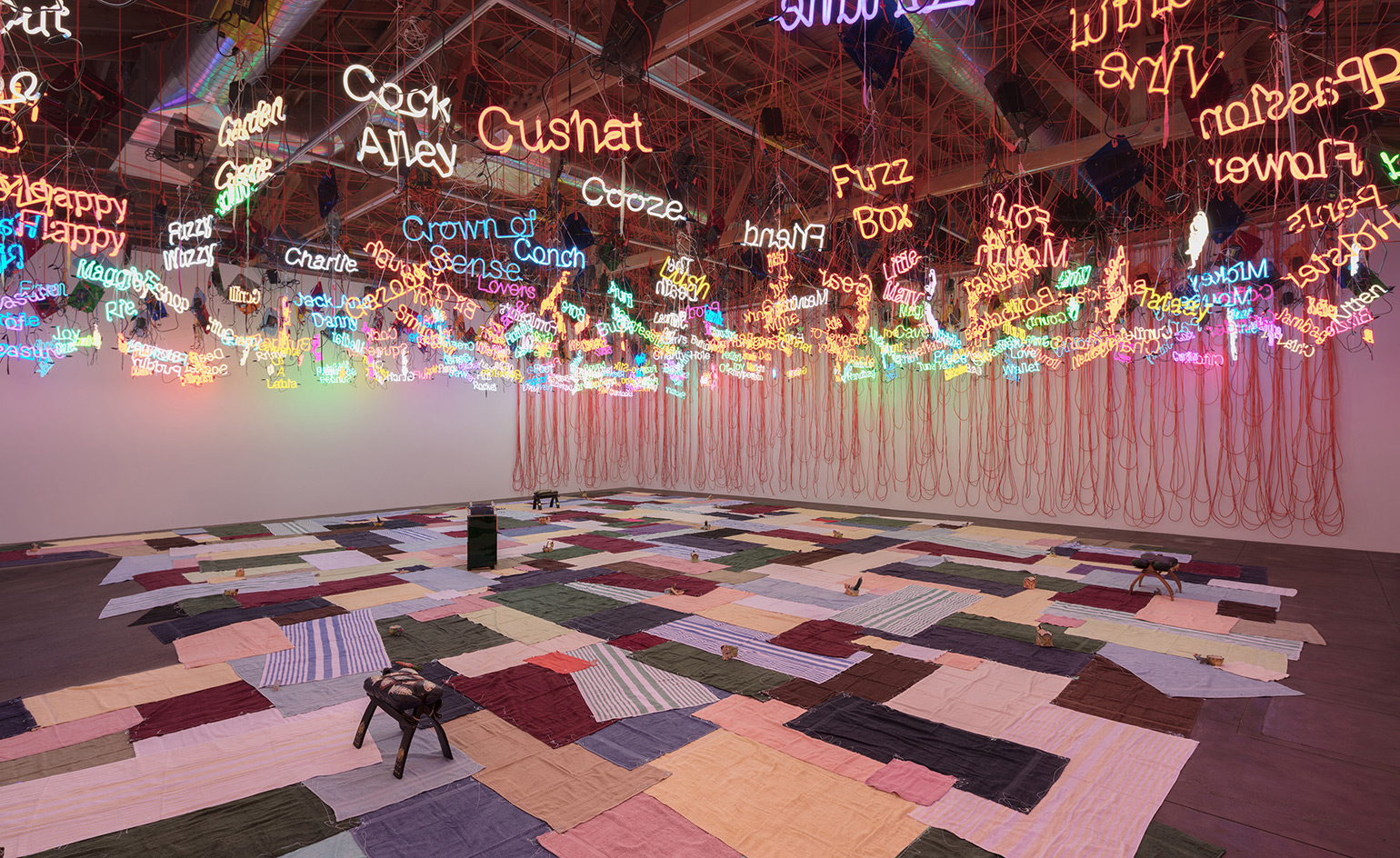
My Madinah. In pursuit of my ermitage..., 2004, was designed as a bipolar transmission and reception station
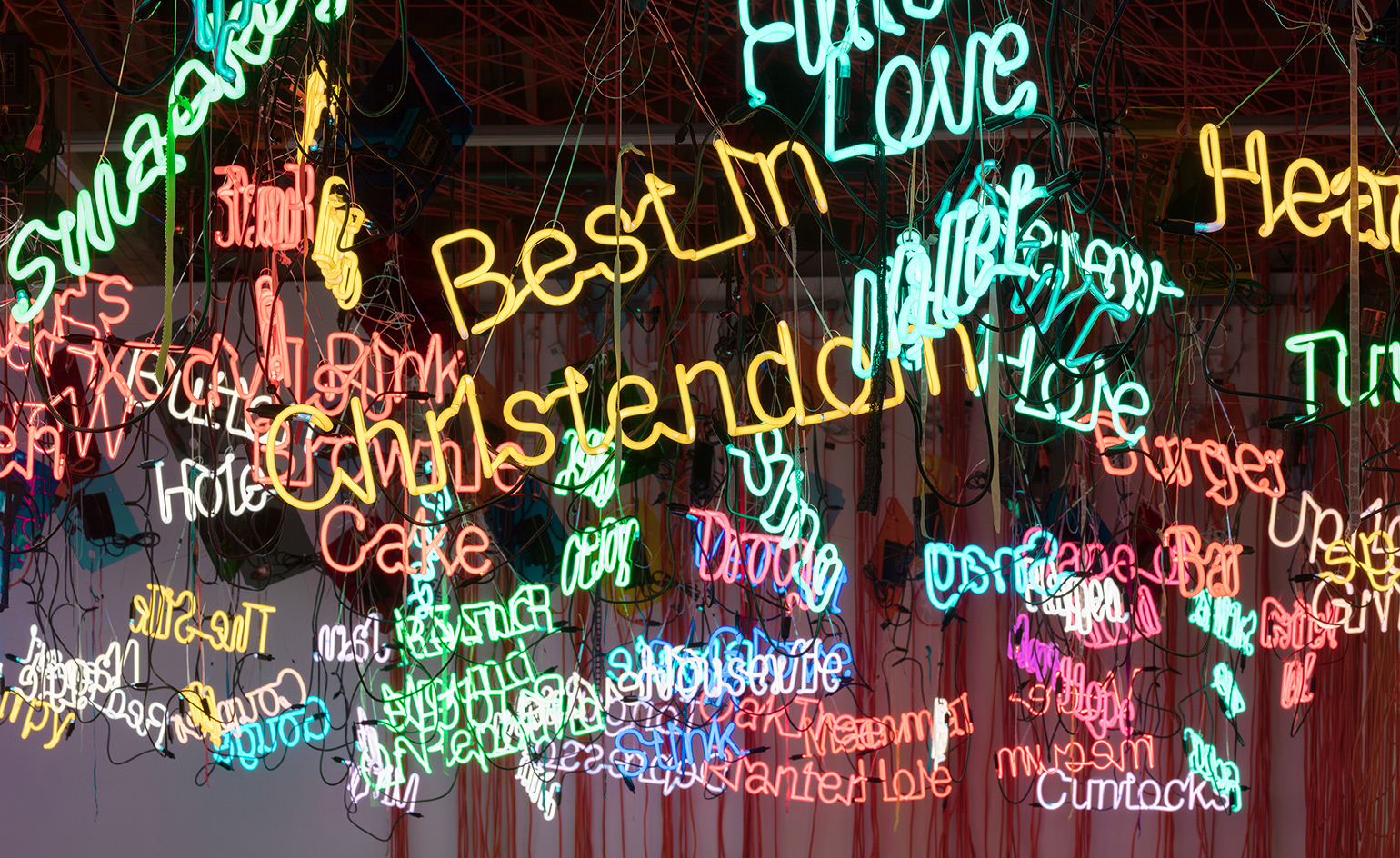
Detail of My Madinah. In pursuit of my ermitage..., 2004
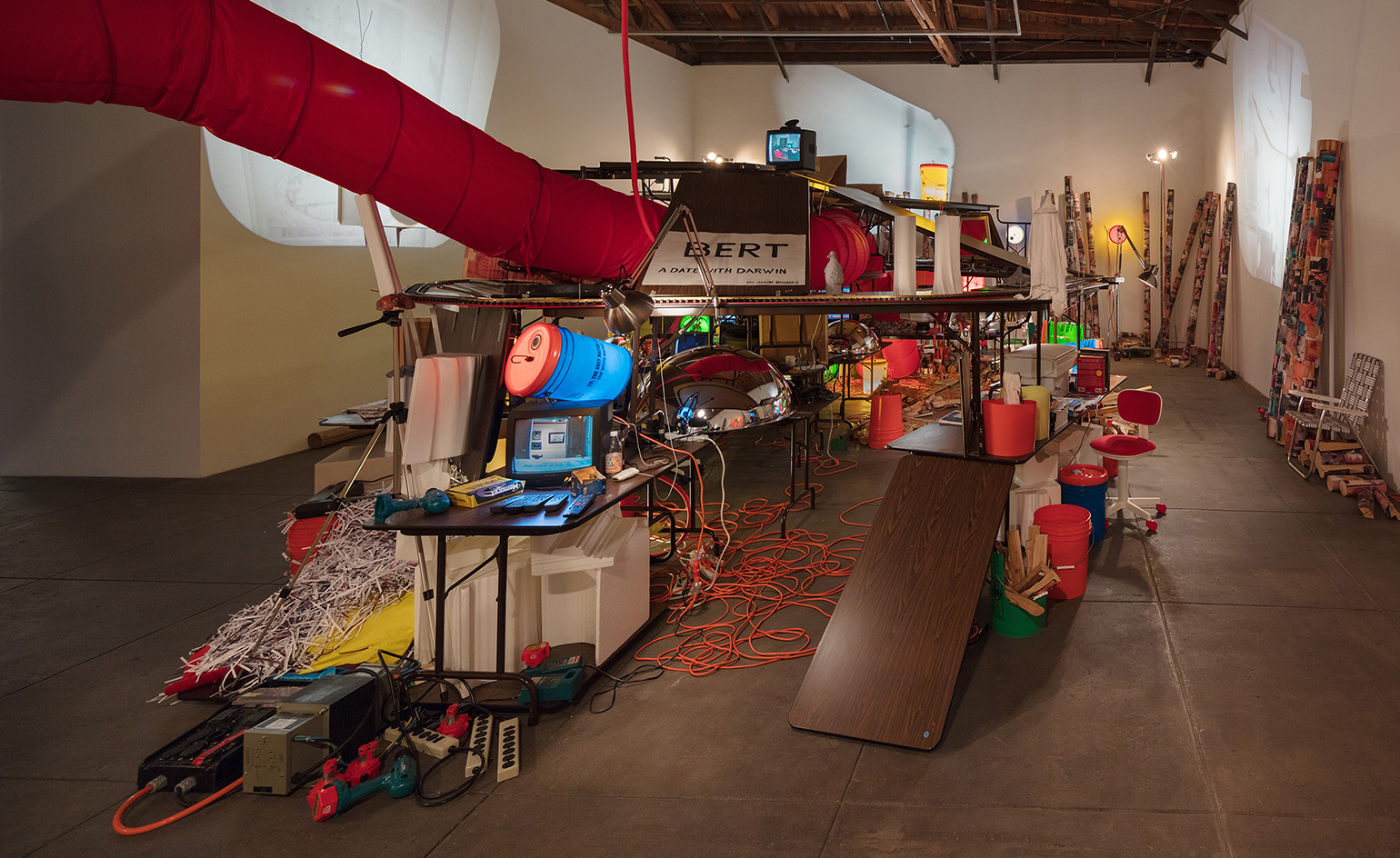
In The Creation Myth, 1998, Rhoades sought to understand why, how, and what humans create by exploring creationist and evolutionist theories in tandem

Swedish Erotica and Fiero Parts, 1994, is Rhoades' only work to specifically reference the urban and cultural landscape of his native LA. His deep fascination with Ikea and the act of buying inspired him to create modular set-ups of 'furniture' for viewers to explore
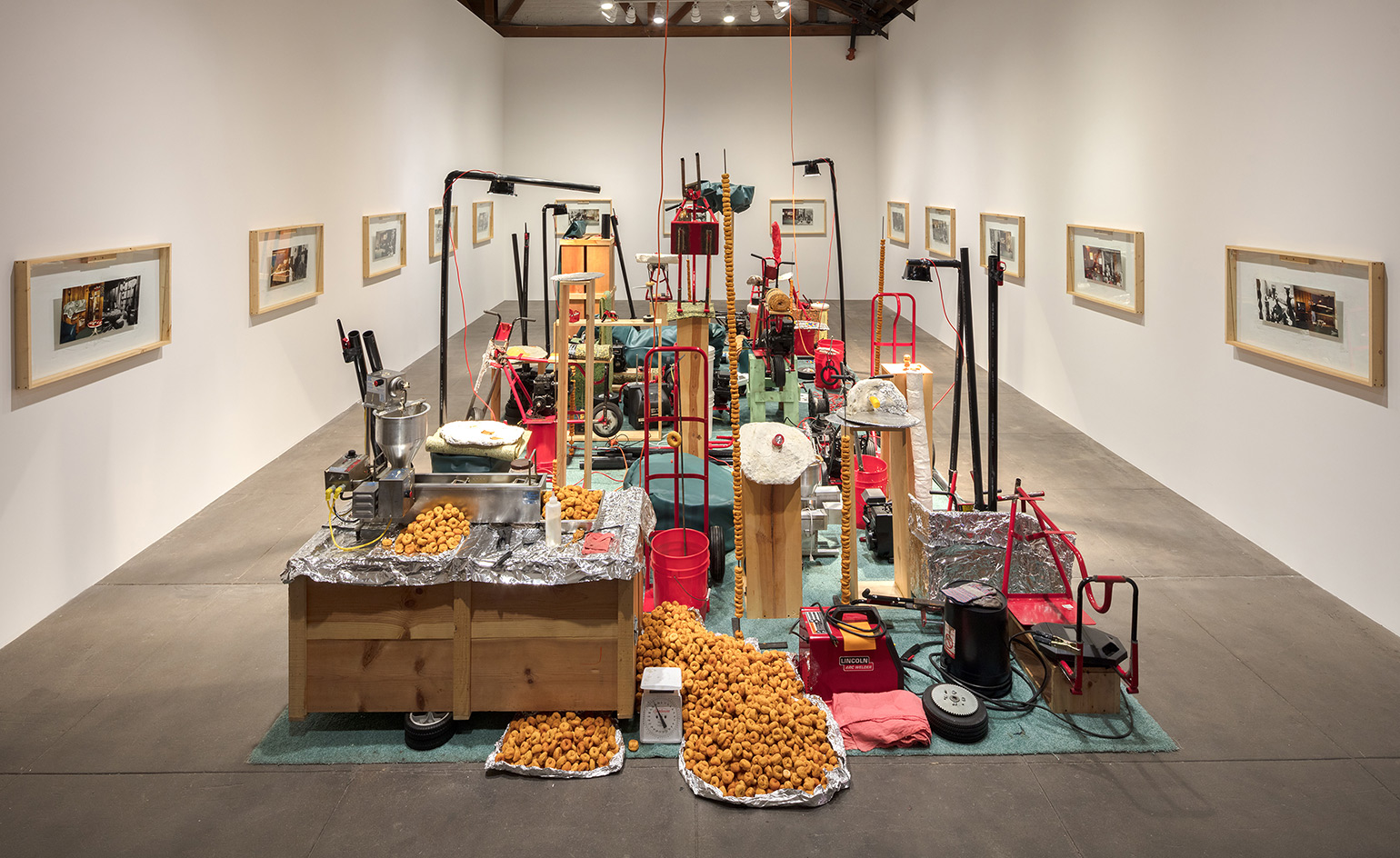
My Brother / Brancuzi was originally created for the 1995 Whitney Biennial, Rhoades' first national museum exhibition. Its setting and history inspired the artist to explore the values of modernism

In My Brother / Brancuzi, 1995, Rhoades juxtaposes his brother's suburban bedroom with the famous studio fo Constantin Brancusi
INFORMATION
‘Jason Rhoades: Installations, 1994–2006’ is on view until 21 May. For more information visit the Hauser & Wirth website
ADDRESS
Hauser Wirth & Schimmel
901 E 3rd St
Los Angeles, CA 90013
Wallpaper* Newsletter
Receive our daily digest of inspiration, escapism and design stories from around the world direct to your inbox.
Charlotte Jansen is a journalist and the author of two books on photography, Girl on Girl (2017) and Photography Now (2021). She is commissioning editor at Elephant magazine and has written on contemporary art and culture for The Guardian, the Financial Times, ELLE, the British Journal of Photography, Frieze and Artsy. Jansen is also presenter of Dior Talks podcast series, The Female Gaze.
-
 Sotheby’s is auctioning a rare Frank Lloyd Wright lamp – and it could fetch $5 million
Sotheby’s is auctioning a rare Frank Lloyd Wright lamp – and it could fetch $5 millionThe architect's ‘Double-Pedestal’ lamp, which was designed for the Dana House in 1903, is hitting the auction block 13 May at Sotheby's.
By Anna Solomon
-
 Naoto Fukasawa sparks children’s imaginations with play sculptures
Naoto Fukasawa sparks children’s imaginations with play sculpturesThe Japanese designer creates an intuitive series of bold play sculptures, designed to spark children’s desire to play without thinking
By Danielle Demetriou
-
 Japan in Milan! See the highlights of Japanese design at Milan Design Week 2025
Japan in Milan! See the highlights of Japanese design at Milan Design Week 2025At Milan Design Week 2025 Japanese craftsmanship was a front runner with an array of projects in the spotlight. Here are some of our highlights
By Danielle Demetriou
-
 Leonard Baby's paintings reflect on his fundamentalist upbringing, a decade after he left the church
Leonard Baby's paintings reflect on his fundamentalist upbringing, a decade after he left the churchThe American artist considers depression and the suppressed queerness of his childhood in a series of intensely personal paintings, on show at Half Gallery, New York
By Orla Brennan
-
 Desert X 2025 review: a new American dream grows in the Coachella Valley
Desert X 2025 review: a new American dream grows in the Coachella ValleyWill Jennings reports from the epic California art festival. Here are the highlights
By Will Jennings
-
 In ‘The Last Showgirl’, nostalgia is a drug like any other
In ‘The Last Showgirl’, nostalgia is a drug like any otherGia Coppola takes us to Las Vegas after the party has ended in new film starring Pamela Anderson, The Last Showgirl
By Billie Walker
-
 ‘American Photography’: centuries-spanning show reveals timely truths
‘American Photography’: centuries-spanning show reveals timely truthsAt the Rijksmuseum in Amsterdam, Europe’s first major survey of American photography reveals the contradictions and complexities that have long defined this world superpower
By Daisy Woodward
-
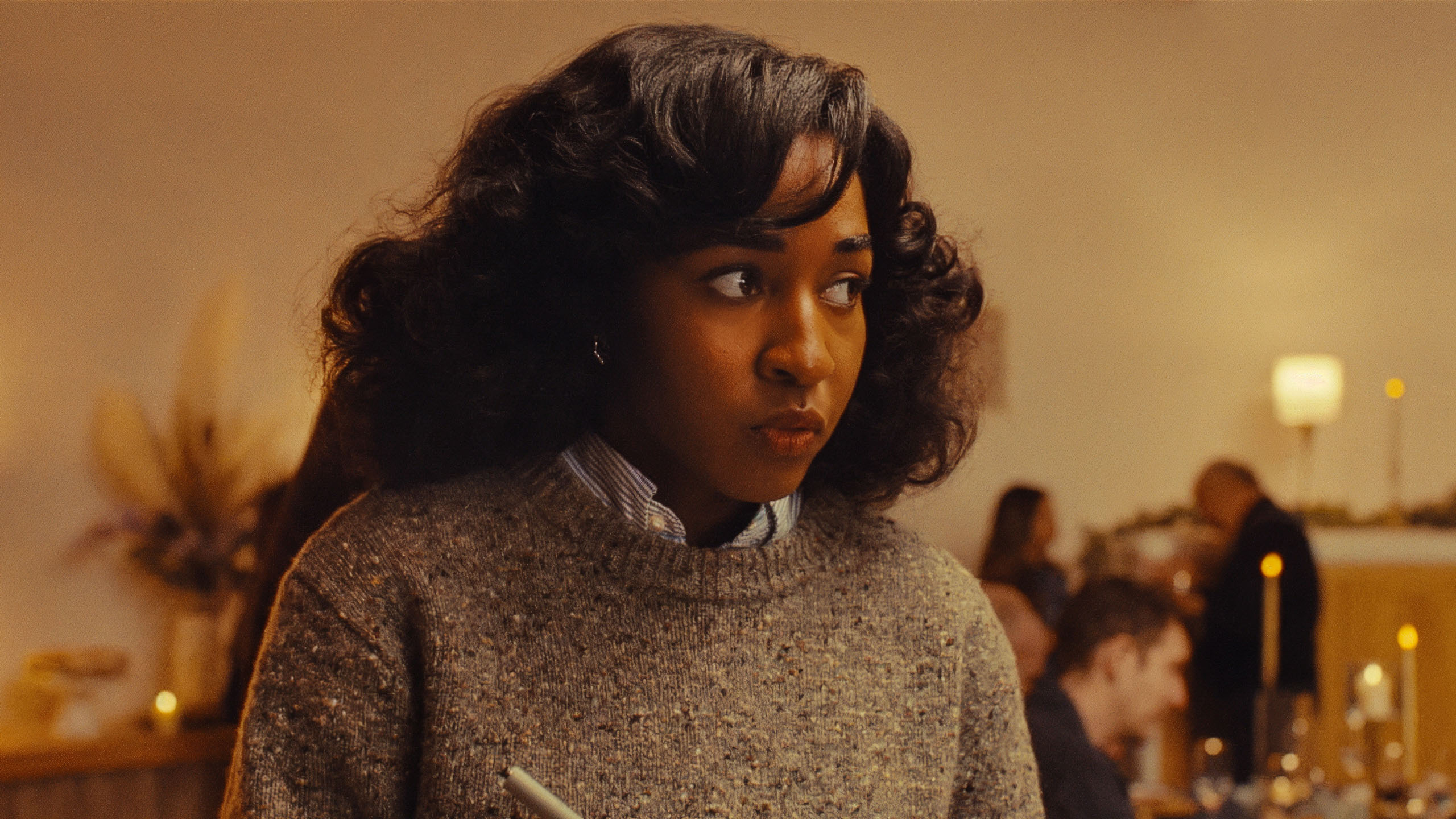 Sundance Film Festival 2025: The films we can't wait to watch
Sundance Film Festival 2025: The films we can't wait to watchSundance Film Festival, which runs 23 January - 2 February, has long been considered a hub of cinematic innovation. These are the ones to watch from this year’s premieres
By Stefania Sarrubba
-
 What is RedNote? Inside the social media app drawing American users ahead of the US TikTok ban
What is RedNote? Inside the social media app drawing American users ahead of the US TikTok banDownloads of the Chinese-owned platform have spiked as US users look for an alternative to TikTok, which faces a ban on national security grounds. What is Rednote, and what are the implications of its ascent?
By Anna Solomon
-
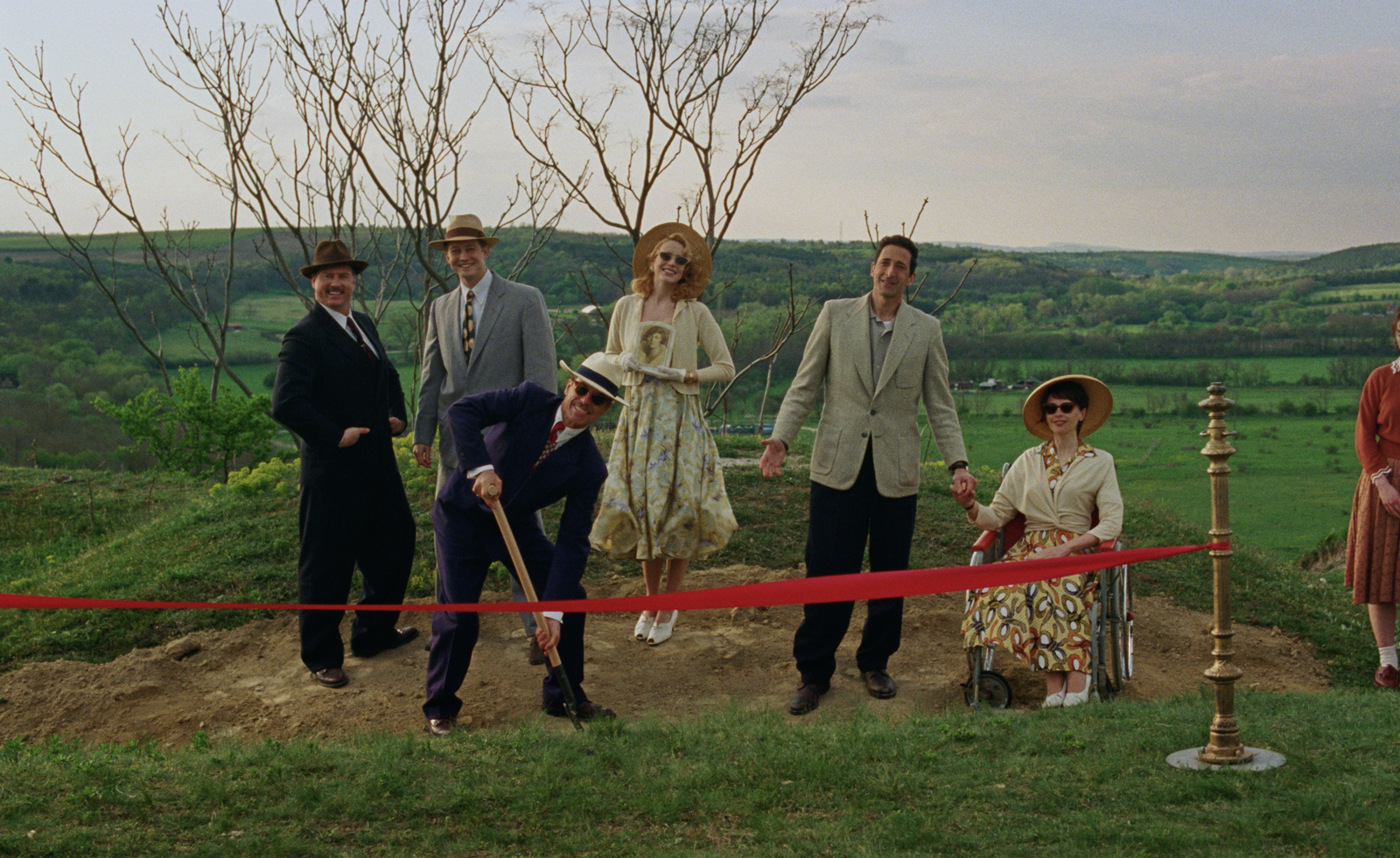 Architecture and the new world: The Brutalist reframes the American dream
Architecture and the new world: The Brutalist reframes the American dreamBrady Corbet’s third feature film, The Brutalist, demonstrates how violence is a building block for ideology
By Billie Walker
-
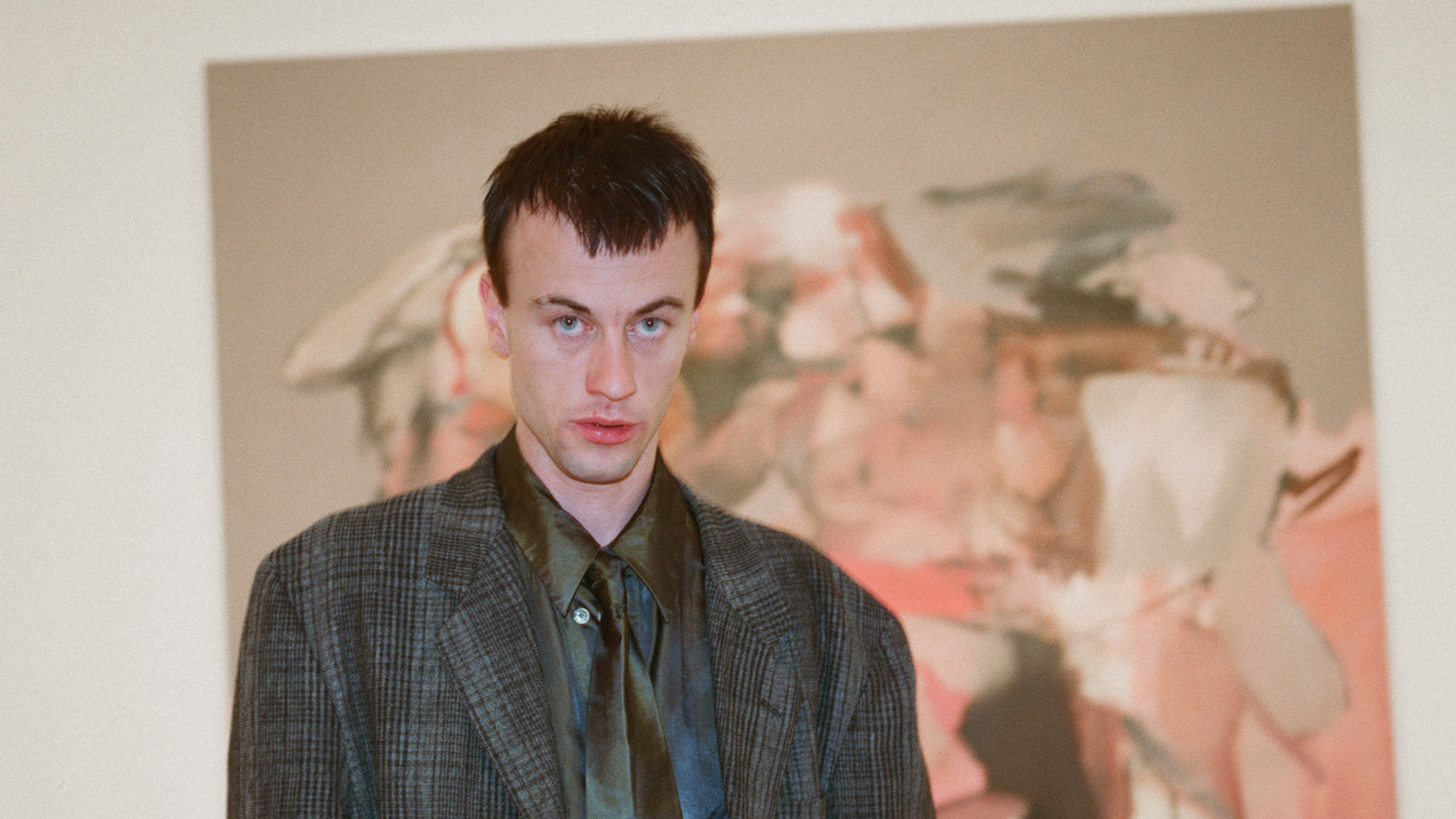 Inside the distorted world of artist George Rouy
Inside the distorted world of artist George RouyFrequently drawing comparisons with Francis Bacon, painter George Rouy is gaining peer points for his use of classic techniques to distort the human form
By Hannah Silver